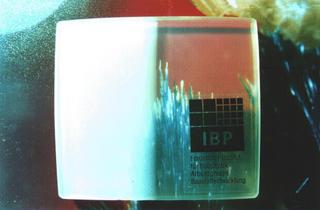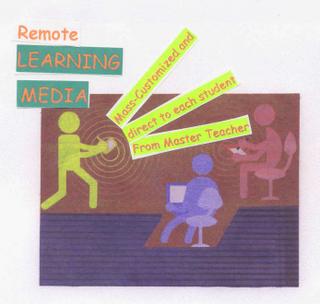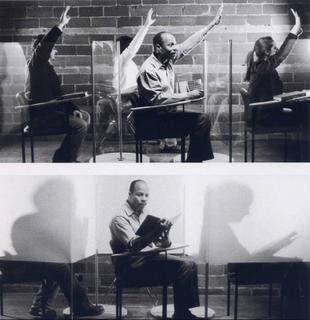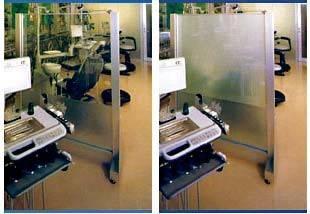Inquiries and comments of a general nature as well as references to innovation in K-12 curriculum and facilities, connectivity in higher education facilities, the phenomena of Telepresence/Shared presence and higher education facility design and Teaching research.(COPYRIGHT © MIKAEL POWELL. All Rights Reserved)
Monday, October 31, 2005
[I-1] [I-2] "Ω” - (the reform formerly known as)
Perhaps the first step to school reform is to popularize one national concept of education—and then, with everyone on the same page, we can seek to reform that element. I am partial to individuality in education and the ‘personal best’ model.
Alternatively, if we cannot convince everyone of that goal for education, then perhaps we can appropriate an old-fashioned term for learning like “acroamatics[1]. We can then talk about Acroatic[2] Reform in very universally specific ways.
Or perhaps, the reform needs to be a symbol like “the artist formerly known as”. We can “Reform School Ω”. Maybe in this form we can de-value this concept of education. Then the reform can be about a specific notion, precise goals and dispassionate assessment.
Regardless, this exercise in vocabulary is not pedantic. Even Smith and O’Day base their reform strategy on a unified vision and goals. --Mikael Powell
Sources Cited:
1. Acroamatic - Webster's Revised Unabridged Dictionary, © 1996, 1998 MICRA, Inc. \Ac`ro*a*mat"ic\, Acroamatical \Ac`ro*a*mat"ic*al\, a. [Gr. ?, fr. ? to hear.] Communicated orally; oral; -- applied to the esoteric teachings of Aristotle, those intended for his genuine disciples, in distinction from his exoteric doctrines, which were adapted to outsiders or the public generally. Hence: Abstruse; profound.
2. Acroatic - Webster's Revised Unabridged Dictionary, © 1996, 1998 MICRA, Inc. \Ac`ro*at"ic\, a. [Gr. ?, fr. ? to hear.] Same as Acroamatic.
Wednesday, October 26, 2005
[I-1][I-2]Classroom Design for Scripted Curriculum

On Left-Second grade teacher Garnet Mell teaches her classes based on scripted lessons plans from Success for All.
First of all the dilemma of many new teachers in the K - 8 environment and exemplified in the article “Lost at Sea” by Kauffamn, Johnson, Kardos, Liu and Peske really hit home to me. While I have never taught elementary school, I was an adjunct professor in an university school of Architecture. There was no curriculum guide (other than a sentence about my course from the every-six-years accreditation board) and no supervision. Moreover, the department head considered me successful if they never heard anything about me – No gripes from me, my students or their parents. Well, the flipside to no curriculum is a main focus concern–the scripted curriculum.
This issues brings me back to Landson-Billing’s article “But That’s Just Good Teaching”, where they categorize the successful teacher as one who was “not dependant on state curriculum frameworks or textbooks to decide what and how to teach”. Yet I learned that variance from the framework of the reform can make the true effectiveness of the reform curriculum not assessable. In my readings this week I noted that Cohen writes about the “gap between the curriculum developer’s intentions for students and what actually happens in lessons”. So, I suppose that effective reform must begin with a well devised curriculum that is completely implemented and correctly assessed. Therefore, I wonder if the Model Classroom of the Future can’t function in two formats –
1.) A Teaching Classroom (funded by the national textbook companies). In this learning environment the printed curriculum would be replaced by the mass-customized learning media arriving directly to each child and uniquely crafted to sort each student’s presentations based on his last response. Teacher support and all student actions would be quantified and recorded for use in revising the curricula.
2.) A Learning Classroom in which the learning media arrives directly to each child, modified by a student’s actual responses. The efficacy of the lesson for each child can be directly derived from individual assessment. The learning media should certainly incorporate the 5 domains discussed in “Reform: By the Book…” by Ball and Cohen and the learning media would not be a single purchase, but an on-line, real-time system that is constantly revised. Perhaps it is modified in a fashion to emulate the current Japanese model of incremental review. --Mikael Powell
++++++++++++++COMMENT---Hi Mikael: I'm still intrigued by your content-delivery idea - I've never even considered it, and it seems brilliant from a first-take... standardize delivery of instructional content we can all agree on, at some national level using technical skill (the technician side) at relatively low cost, then specialize/differentiate other value-laden content using professional teachers hired at a local level... a sort of 'split day' that could generate some basic levels of competenceat a national scale, while allowing for local control and delivery of everything else... go after this!! And then tell me when you figure it out!! :)C
Friday, October 21, 2005
[I-2][I-1][I-3]Thermotropic Screening in the Classroom Environment

T-OPAL® Thermotropic Casting-Resin Panes
Thermo-optically variable polymeric material with adaptive light transmission
Thermotropic Casting-Resin Panes
Thermo-optically variable polymeric material with adaptive light transmission
In the picture below we see an room, partially glazed with T-OPAL® casting-resin panes.

From the same position, the suceeding picture shows a thermographic photo The temperature-controlled opacity of the T-OPAL® system at high outside temperatures reduces the solar radiation in the interior. This effect is proved by the reduced surface temperatures of the furniture behind the panes (blue area in the thermogram), whereas normal insulating glass leads to a high temperature of the furniture surfaces, an effect that is obvious in the left part of the photo (red area in the thermogram).

How it works: The T-OPAL® system that uses a technology called thermally reversible light scattering - the glass is frosted (translucent) when it’s cold, but turns completely transparent when heated. The material is stable to about 85 degrees C.
1.At activation temperature (adjustable between about -10 degrees C. to 50 degrees C.) glazing becomes transparent - this takes roughly 2-3 minutes for a 28 x 18 piece.
2.When material reaches ambient temperature it becomes opaque. It can take from 20 minutes to 2 hours to complete the transformation depending on the temperature the glass was raised to, the ambient temperature, and the formula used to make the T-OPAL® material.
Specifically, at Critical temperature (HOT) the material goes through a physical electronic transformation in specific transition metal oxides and related compounds which transfers it from a semi-conducting state to a metallic state. the incident light is strongly scattered, with most of it being diffused.
Conversely, at the Ambient temperature the material goes through a physical electronic transformation which transfers it from a metallic state to a semi-conducting state causing multiple absorption of light - only a small fraction is transmitted.
Perhaps this passive technology can be transformed to create private and semi-private work clusters in learning environments? --Mikael Powell
Tuesday, October 18, 2005
When is a Student Disabled?
 On Left- charter school groundbreaking
On Left- charter school groundbreakingPart 1 -Introduction
Should the attainment of assessed ability or achievement to performance capability be the standard for determining a disability?
Both the Individuals with Disabilities Education Act and Section 504 of the Vocational Rehabilitation Act specify legal definitions and outline requirements that entitle a child to receive specific services under the law. They are, however, based on projected potential with no regards to a child’s character. Where does that leave the overachiever who struggles to maintain average grades? Does not the denial of accommodations for this child disable him?
Bernard West is the principal of the South Dallas campus of a non-profit charter school organization whose mission is to “encourage individual achievement through the hands-on methodology of vocational education with rigorous academics excellence”. The organization has been in operation for 2 years on two campuses educating K – 6th grade students. They are leasing former parochial school facilities. The opening of Mr. West’s campus was delayed this year because of code required campus alterations. Bernie West meticulously managed the construction effort himself to ensure that all regulations were met. He is a by-the–book principal who prides himself on professional excellence.
Mr. McGill is a former Army Reservist and a single father raising his 11-year-old son. While he can walk for short distances with the aid of leg supports, he often utilizes a wheel chair. This is the start of his family’s second year at the public charter school. His son, Devon McGill had great difficulties adapting to the curriculum last year, but his homeroom teacher Ms. Thompson (and to a lesser extent, his mathematics and science teachers) made accommodations as their normal course of study. Devon was maintained as an average student with C’s in most subjects. Devon loved school and Mr. McGill was the 5th grade Homeroom “mom”.
Part 2 -The Principal's Point of View
M E M O R A N D U M
To: Samuel Tate, PhD., Founder and CEO, You Can Academy Inc.
From: Principal Bernie West, You Can Academy, Abundant Life campus
Re: Devon McGill, 6th grade
Action: Dr. Tate, I want to fill you in about the situation with Sam McGill and his son. Maybe we will have time to touch base on this matter before the Open House on Thursday night.
Fundamentally, the case of Devon McGill is another success story for our academy. Our regular academic environment supports this child to fully achieve commensurate with his assessment. We provided an expedient diagnostic process, utilized accomplished technicians in accessing his needs and did so with an economy of resources that recognize the needs of all of our students. True to our School Mission statement, we have encouraged individual achievement and have ensured that there is no barrier preventing him from attaining his station in life. Young Devon is a happy studious child who is not disabled.
Firstly, we strictly adhered to the timetable for assessment, as required [1]. At the end of last school year, Ms. Thompson mentioned to Mr. McGill the need to have a thorough evaluation performed on Devon. From initial referral to completion of full individual examination was within 60 days and the initial IEP/ARD meeting was scheduled within 30 calendar days (and before the first day of school). In oral expression, listening comprehension and arithmetic computation Devon’s overall level of Intelligence Functioning appears to be within the Low Average range. His verbal IQ is within the High average or bright range; His Performance IQ is within the Average range and his Full Scale IQ is at the low Average range. Devon’s individual profile contains skills ranging from the bright range down to the intellectually deficient range with his weakest skills involving concentration and visual-motor integration skills. However, he does not qualify as learning disabled because there is not a significant discrepancy between his Full Scale IQ and his standard scores achieved in those areas.
But, these findings were not unexpected. Ms. Thompson initially noticed a problem in Devon. You know that all of our teachers are certified or on a track to certification. They are “appropriately and adequately prepared and trained[2]”. Our contracted diagnostician is quite accomplished and her work illustrates that Devon is not prevented from achieving to his IQ. She emphatically remarked that “This child is not disabled!”
That is why it is so important that we extend our limited resources to the student most in need, as required by law. We must recognize and support students with actual disabilities as they are discovered on our campus. My grand efforts to accommodate those disabled individuals despite our limited budget, is well documented. As you know, the opening of our school this year was delayed because of requirements to bring the facility up to accessibility codes. A large exterior ramp was constructed leading from the sidewalk to the front portico and the inside lobby was subdivided to provide inclined access to the mezzanine office level. Toilet fixtures were removed from each restroom to accommodate handicap turn-around radiuses.
So you see that we have ensured that there is no barrier preventing Devon, or any other student here from attaining his station in life (in fact, the hard work that he shows in his class work efforts will be needed thoroughout his life) . Texas charter schools are not required to target learning disabled school children or even reflect diversity in the school community. Therefore, we will continue to maintain our niche and still strive to be all things to all people, pursuant to our mission of encouraging individual achievement. Should Devon be presented with barriers that impede fulfillment to his aptitude, we will surely deal with those. I understand that Mr. McGill may be contacting you, please help me to show him how our program has benefited his son.
Thanks, Bernie West
Part 3 - Parent's Point of View
[At the Parent Open House- Abundant Life campus, on Thursday night in the gymateria. Dr. Samuel Tate, Founder and CEO of You Can Academy Inc. is concluding his comments to the parents assembled. Mr. McGill raises his hand ]
Mr. McGill: “I know you said that you would entertain ‘general questions’ but you know, my son is not one of your ‘success stories’ and we are now looking elsewhere for his schooling” [The audience strains back to see Mr. McGill.]
“You are the founder of You Can Academy and you have refused to recognize my son’s disability. Character cannot be ignored when determining potential, nor can you discount a parent’s unique perspective as to what is best for his son, nor can you pit one child’s need for resources against another. Moreover, pursuant to your vision of ‘encouraging individual achievement’, my son is entitled to support services”.
“My Child is not allowed special support because the fact that he earns C’s belies his very low performance expectations and thus he is not disabled and entitled to accommodations for his learning differences. When I was told that he was an overachiever, I was immediately proud because I am one as well. It was later that I understood the unfortunate paradox. My mantra to his educators has always been ‘My son should not lose his love for school!’, however, even with special treatment, my son was studying more than three hours daily- seven days a week. This spirit that propels individuals beyond their boundaries cannot be discounted. It must be recognized as an expression of purpose and a drive that is not inconsequential to the wellbeing of societies. My son must continue to receive supportive services as a matter of policy, not at teacher discretion”. [Mr. McGill wheels into the aisle way.]
“That is why as a parent I have a valuable and highly personal opinion that should usurp the professional expert. We parents must unite! I absolutely know my son and his potential best. It is obvious and well-proven that there is great wisdom in common masses. If one would quantify the knowledge that each parent innately knows about their children (the learning habits, the ways to enhance study, the quantity of homework they can handle) then those insights are more accurate than a trained professional observing my child[3]”.
“The concept that to provide services for my son would prevent a required service for another is not a burden to put on me or any other parent. It is a policy matter as to the priority and stewardship of the funds. Code required tenant improvements have no direct connection to providing tutoring or lessened homework or test accommodations for my son. Services must be apportioned to provide each student with the support needed to achieve”.
“And finally, to achieve what? To fulfill your mission statement, individual achievement must be to the child’s personal best. My son is now prohibited from the opportunity to excel in school and love school as much as I did. After leaving the IEP/ARD meeting it was hard to fight back the tears- partially to mourn the death of my son, the scholar; partially to dispel the dreams of reliving my scholastic life vicariously; partly in guilt for nightly threatening matches over homework; but mainly because my child’s opportunities in life were officially reduced. My son must receive an education that enables him to perform to the extent of his capabilities. I will not fail in this. Must he continue here, unsupported? Must we wait until he fails or looses his love for school? Devon must reach his full potential - not your projected potential.”
“Therefore is your treatment of us an indication of your success?” “Huh?” [Superintendent Tate stood ashen. Nancy Taylor’s mom emphatically inserted how well she enjoyed the Parent Pot Luck Mixer. She stammered something nonsensical that was met with accolades. So Mr. McGill rolled through the doorway, careened down the incline in the Mezzanine lobby and out onto the sidewalk.]
--Mikael Powell
Sources Cited:
[1] A Guide to the Admission, Review and Dismissal Process, Texas Education Agency, June 2002.
[2] 20 U.S. Chapter 33, Section 1412(15)(A
[3] The Wisdom of Crowds, James Surowiecki, page11, 2004.
{NOTE: The characters in the preceeding account are fictitious. This passage is to illustrate that in solving dilemmas in school reform, values are replete. Until you recognize them you will go around in circles. (COPYRIGHT © 2005 MIKAEL POWELL. All Rights Reserved)}
Monday, October 10, 2005
[I-1][I-2]Effectively Assessing School Reform & Design-Without the Classroom Teacher?

It is clear to me is that school reform and innovative school design are inexorably entwined and it is an interesting paradox that, as stated by David K. Cohen in “ A Revolution in one Classroom”, “teachers are the most important agents of instructional policy” but, “teachers are the problem. It is after all, their knowledge and skills that are deficient.” Moving beyond the reason for change and into effective reform application, it seems to me that as long as the classroom teacher remains crucial in the equation, how can real, quantifiable reform happen?
David K. Cohen speaks of Mrs. O, a classroom teacher who believes she is successful in implementing the school districts changes, and yet we find that her ‘reform’ is not compliant with the new directives. I do sympathize with Mrs. O and I find her position especially difficult because tacitly, she is not asked to ignore her expertise in “the old order” so as to strictly adhere to the new regiment. In Landson-Billing’s “But That’s Just Good Teaching”, they categorize the successful teacher as one who was “not dependant on state curriculum frameworks or textbooks to decide what and how to teach”. Yet that variance from the framework of the reform can make the true effectiveness of the reform curriculum not assessable.
So, can innovative, assessable school design best occur within the charter school movement, which, through its small-scale application, reform results can be more reliably quantified? Or perhaps in the public sector, can classroom teachers be taken out of the equation altogether? Can the classroom environment of the future be designed such that the mass-customized learning media arrives directly to each child from a remote Master teacher and the role of the Classroom teacher is one of a facilitator? The efficacy of the reform for each child can be directly derived from individual assessment.
Granted, one might argue (as did the committee on Developments in the Science of Learning, in their article “How People Learn”) that “Systems of teaching are much more than the things the teacher does”. They state that the classroom physical environment, teacher goals, class texts, agency objectives and many other factors are so influential that, “Changing any one of these individual features is unlikely to have the intended effect“.
Therefore, we cannot take tentative steps to reform various factors in education. We must unabashedly consider revisions to all roles in the restructuring of the whole learning process, and subsequently, the redesign of the physical environment in which we educate children.--Mikael Powell
Saturday, October 08, 2005
[I-2][I-1][I-3] SMART Materials in the Classroom?

In the classroom setting , my interests involve studying 1.) The blurring of the categories of seating/flooring, fixtures/wall surfaces and information services/ceiling plane, 2.) The school classroom model in reference to modulized component customization of the lesson plan at the classroom desk, and, 3) Resplendent surfaces as an effective means to help them maintain attention and opaqued and transparent planes in the learning environment to create privacy configurations (and, most importantly, how to allow for student control of the learning environment).
Below, a privacy Screen product is easily, quickly and remotely activated. How can this be adapted for the classroom situation, as shown conceptually above? What existing technologies can accomplish the same requirements? When does the use of this smart material become didactic? -Mikael Powell
Sunday, October 02, 2005
[I-1] [I-2] Innovative Design Vs. 'Old Education'

(On Left--Excerpt from 1973 Standard for Classroom Design)
My Model for charter school design was as follows: The visionary would outline the Mission (hopefully one based on research and experience), an organizational structure would be created to support that vision, an effective pedagogy would then be devised, and lastly, the environment would be fashioned to support that teaching method. I oftentimes thought that problems with designing innovative charter schools mainly occur when the sequence is not as prescribed above (It then becomes much like “the tail wagging the dog”) or when research has not been at the planning table from the beginning or even not at all. However, my thoughts were challenged by Mr. Richard F. Elmore’s article on redesigning organization and the challenges of reforming existing school organizations. He highlights impediments to innovation in existing structures of education -constraints of the framework of the organization to innovation and the lingering remnants of the traditional concept of learning. He implores that you cannot fit innovation into the framework of the existing structure. This is, I believe, another area of concern for new charter schools.
To what degree does the traditional organization of education haunt new charter schools? Despite the interviewing process, does many of the teaching staff rely on their old frameworks to teach (behind the classroom door)? Have I tacitly bought into conservatism in teaching, of which I am a product, when it comes to my own son? Have principals and teachers assumed that the traditional school layouts - the groupings and proximities and amenities of the space (that were previously designed for another methodology) are the appropriate frameworks to provide each student with a conceptual understanding (as oppose to the more traditional general coverage of the material)? In Texas, where there is little or no money for charters schools for capital improvements other than charitable giving, new charter schools are oftentimes shoehorned into defunct parochial schools of traditional design.
Remembering my ideal Model for charter schools, one might say that you simply did not proceed from the Vision to fashioning the environment. And that is true, but one also needs Resources and a real Visionary (the messenger, not the message) to drive full adherence to the Mission.
As an aside, what should the educational spaces be? I now wonder if the key is to design spaces that are not so rigid as to support the school vision of a ‘science room’ or a math’ room, but rather a space so flexible that it can allow some latitude for each teacher to “work the magic”—especially if the object is to provide each student with a conceptual understanding –no matter how uniquely the information needs to be presented to the child or how quickly the child gets it. I wonder. --Mikael Powell

